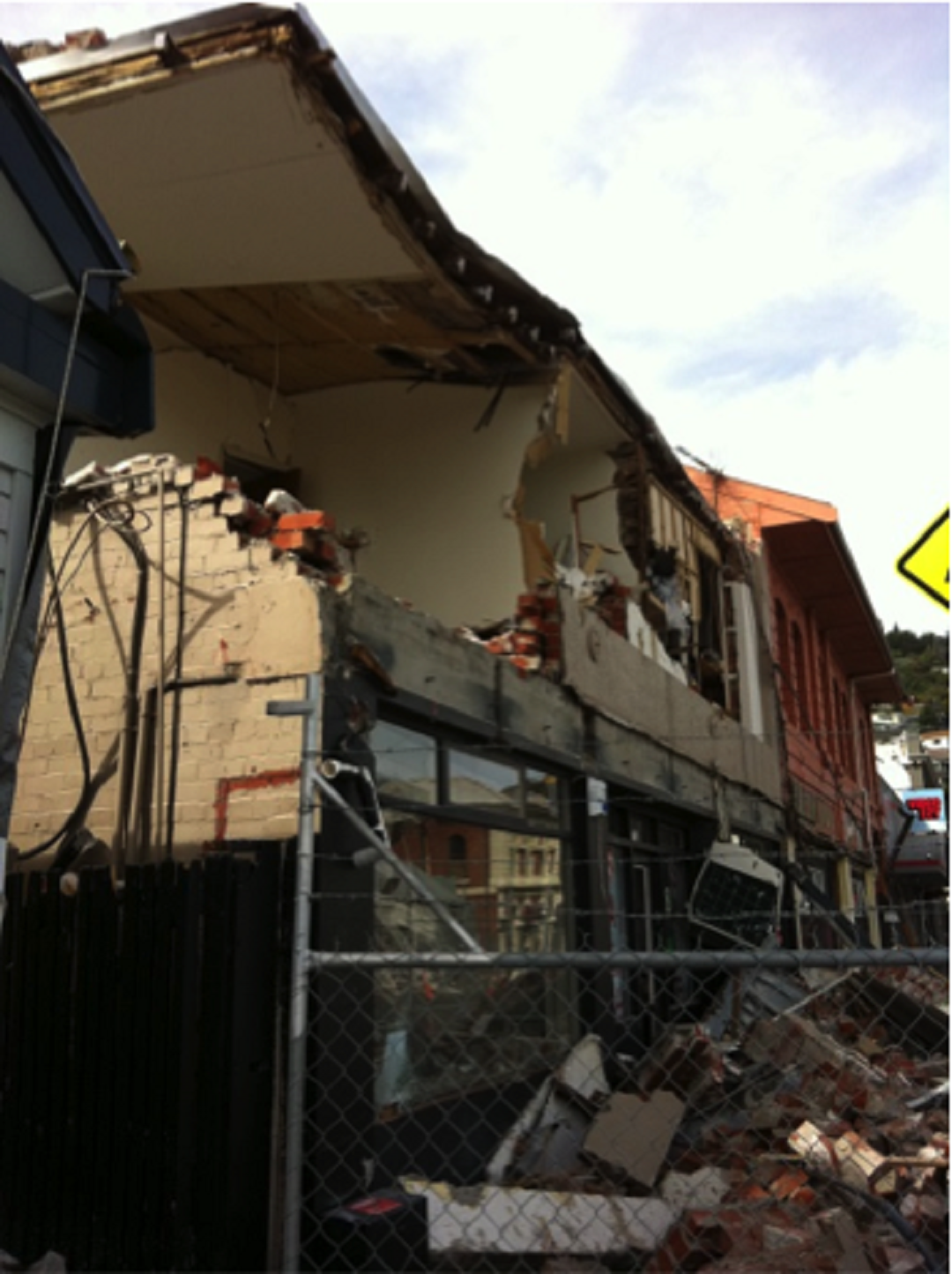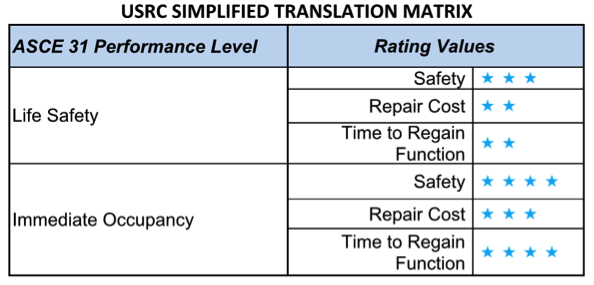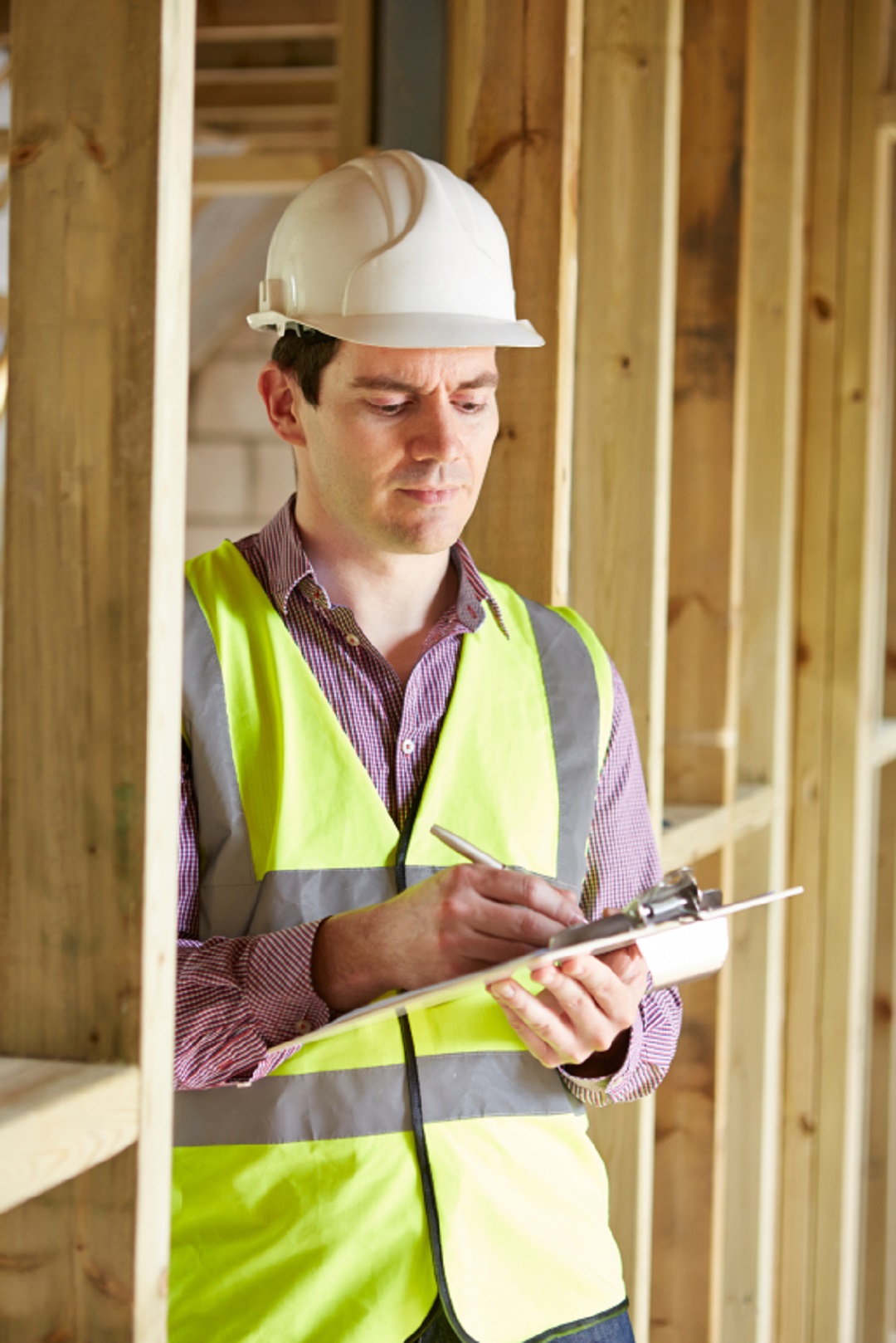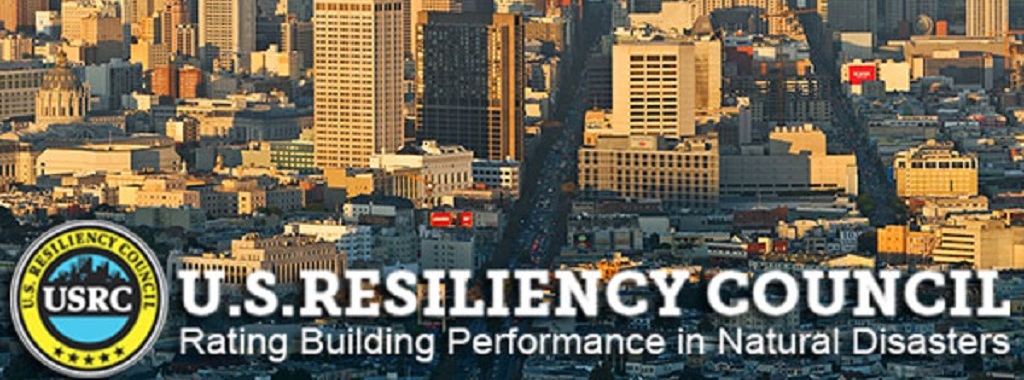The U.S. Resiliency Council (USRC) recently launched its Building Rating System for earthquake hazards. The Rating System assigns a score of from one to five stars for three building performance measures: Safety, Damage (repair cost) and Recovery (time to regain basic function).
This first-of-its-kind building performance rating is based on decades of earthquake engineering research and observations of earthquake damage and recovery. It will become an important component of future sustainable and resilient community goals. The USRC will expand its building performance ratings to include other natural hazards such as hurricanes, tornadoes and floods in the coming years.

With the USRC rating system, users will receive reliable and consistent information about a building’s expected performance during an earthquake and the estimated speed of its recovery afterwards. They can use this information to help them make decisions about purchasing or leasing buildings in which they live, work or invest, or about financing or insuring these buildings. The USRC Rating System also allows businesses and communities to plan and prepare for disasters by giving them data on the likely performance of their building stock. With the support of its Sustaining Members, the USRC will play an important role in long-term strategic capital and disaster recovery planning for communities and businesses. With the USRC Rating System, owners can specify the desired level of performance for their important facilities, to ensure that they not only survive, but also continue operations after a disaster in accordance with their expectations.
The steps to obtain a USRC Verified or Transaction Rating are as follows.
- Select Rating type – The building owner or building jurisdiction determines the desired USRC Rating: Transaction or Verified.
- Select Certified Rating Professional – The building owner selects and contracts with a USRC Certified Rating Professional (CRP) to complete a seismic evaluation of the building. Owners can search for CRPs and see what the requirements are for individuals to be USRC-certified at www.usrc-portal.org.
- Perform detailed evaluation and determine preliminary Rating – The CRP performs a seismic engineering evaluation of the subject building using one of the USRC-approved evaluation methodologies, which include ASCE 41 and FEMA P-58, and translates their findings into a three-dimensional rating using the USRC translation matrix. A simplified version of the translation matrix for an ASCE 31/41 assessment is shown below:

- Submit evaluation and Rating to USRC – The CRP’s evaluation report, proposed Rating and application fee are submitted to the USRC along with a request for either a Transaction or a Verified Rating.
- USRC performs review and issues Rating – The USRC reviews the submission for completeness. The USRC will then either issue a Transaction Rating certificate, or one of its USRC Certified Rating Reviewers will perform a technical review before issuing a Verified Rating certificate.
Becoming a USRC Certified Rating Professional or Reviewer:
The minimum requirements for becoming a USRC Certified Rating Professional include an educational background in structural engineering, five years of relevant building evaluation experience as a licensed Professional Engineer and professional references.
The minimum requirements for becoming a USRC Certified Rating Reviewer includes either holding a Structural Engineering license followed by five years of relevant experience, or a Professional Engineering License followed by 10 years of relevant experience.
Details of the application process and other requirements for certification are provided on both the USRC website, www.usrc.org, and the USRC portal, www.usrc-portal.org. The cost to become a USRC Certified Rating Professional or Reviewer is $600 for individuals with a $100 annual renewal fee. Individual and corporate members have discounts on certification.

USRC Membership
The U.S. Resiliency Council is a growing 501(c)(3) nonprofit organization with the vision of a world in which building performance in earthquakes and other natural hazards is better understood by building owners, tenants, financial institutions and communities. Corporations, organizations and individuals who are stakeholders in the built environment and who have a passion for improving the resiliency of our nation, have the opportunity to support the USRC through sustaining memberships. With the help of its sustaining members, the USRC will encourage:
- Increasing market demand for better-performing buildings
- Fostering collaboration among diverse stakeholders and technical experts
- Promoting integrity, stability, consistency and transparency of rating systems
- Educating and advocating for safe buildings and a better public understanding of building performance
USRCs members include many of the largest and most respected professional A/E firms and engineering professional societies in the country. Membership is open to all companies, individuals, communities and other stakeholders in the built environment. Information on joining the USRC can be found at the USRC website www.usrc.org.
What contributions from engineers are necessary to help create more resilient communities? Let us know in the comments below.





